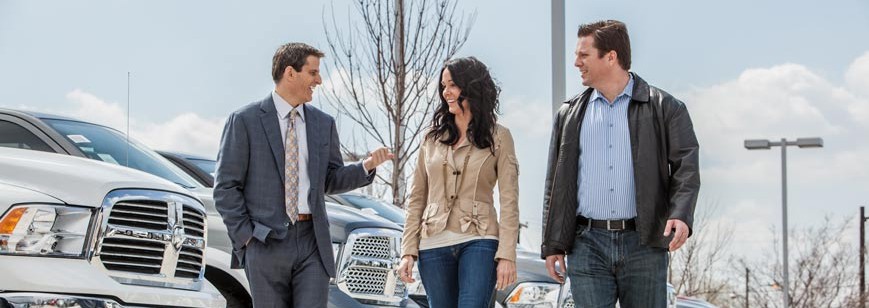
Before heading off to the dealership, intending to trade “Old Faithful” in on a shiny new ride, take the time to complete the following steps. Doing so can save you time and reduce some of the stress that can sometimes be associated with the car-buying process.
- Determine an estimated value of your current vehicle. Edmunds.com and KBB.com (Kelley Blue Book) are good resources for establishing a base value of what your vehicle is worth. Make sure you are realistic about the condition of your vehicle as you enter the information and remember the valuation is simply an estimate. If you want a true valuation of your vehicle based on current market value, you will need to have it appraised at a dealership.
- If you own your vehicle outright, be sure you have the proper title documents before you go to a dealership with the objective of trading the vehicle. Also, if there is a co-owner on the title, that person will need to be available to sign the trade documents.
- If you are currently paying on a lease or loan for your vehicle, call your lender to get a payoff quote. Then compare that amount to the estimated vehicle value from step one. Doing so can reduce unexpected surprises at the dealership when you owe more than the vehicle is worth. Negative equity, or being upside down as it is sometimes called, is not uncommon and can sometimes be “rolled” (included) into the financing of your new vehicle.
- Remove all your personal items. Check under the seats, in every storage area and the glove box – twice. Then check again. You may be surprised at what you find. Most dealerships have more than enough toys, umbrellas and pairs of sunglasses that have been left behind. There’s no need for you to donate to the cause. While you’re at it, anything that may contain your personal information, such as copies of the registration. And check the owner’s manual to ensure you didn’t write your information there.
- Make sure your vehicle is clean. If possible, get your vehicle detailed. Remember – what you see is what you get. Make sure what the dealer is seeing is the best possible version of your vehicle.
- Other costs to consider when trading your current vehicle are insurance and fuel expenses. If you already know what kind of vehicle you are interested in, you can contact your insurance agent in advance to get some estimated rates. And to calculate the difference in fuel economy, view our fuel expense calculators to quickly determine an estimated difference between Old Faithful and the vehicle that has captured your attention.